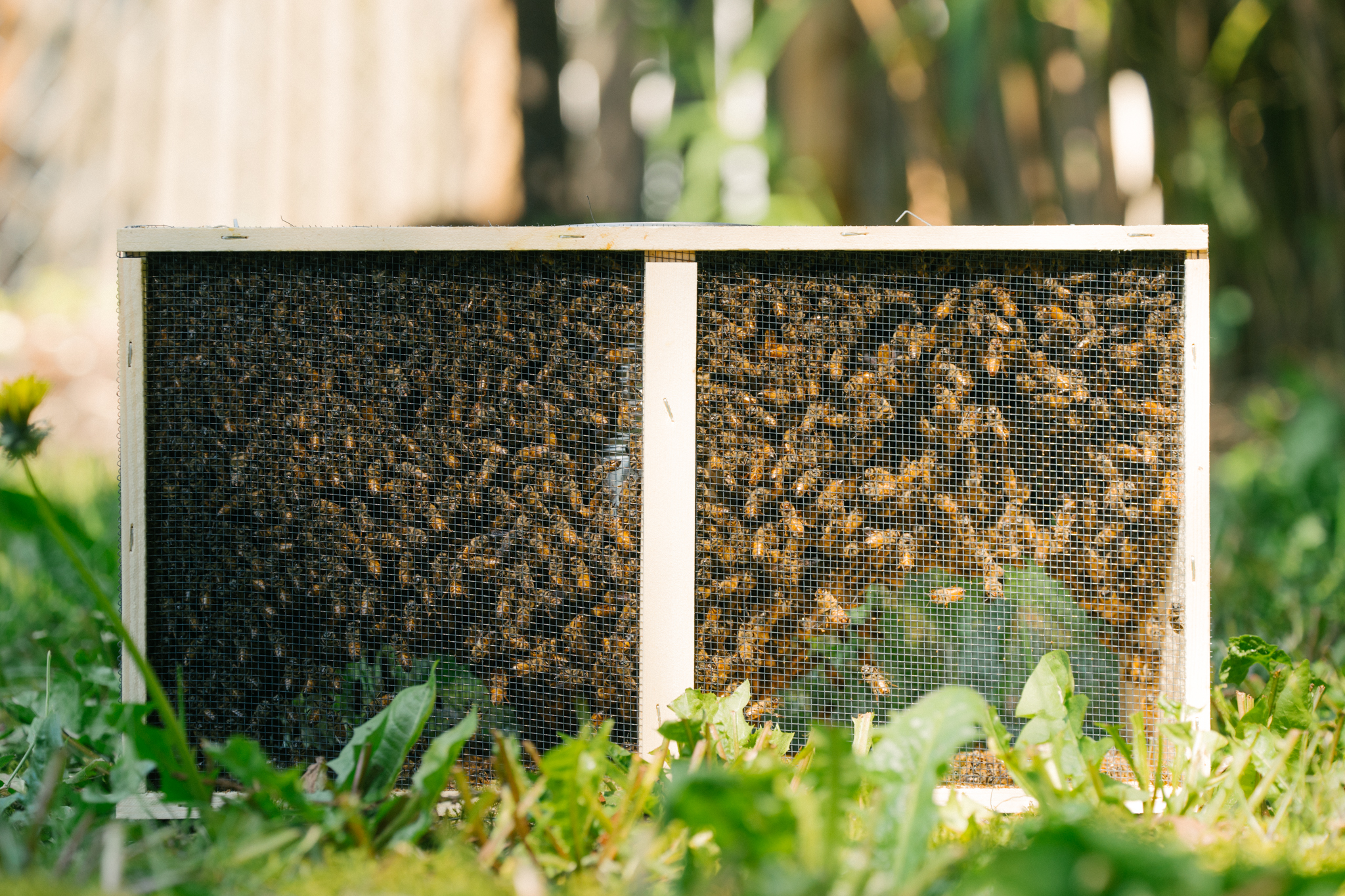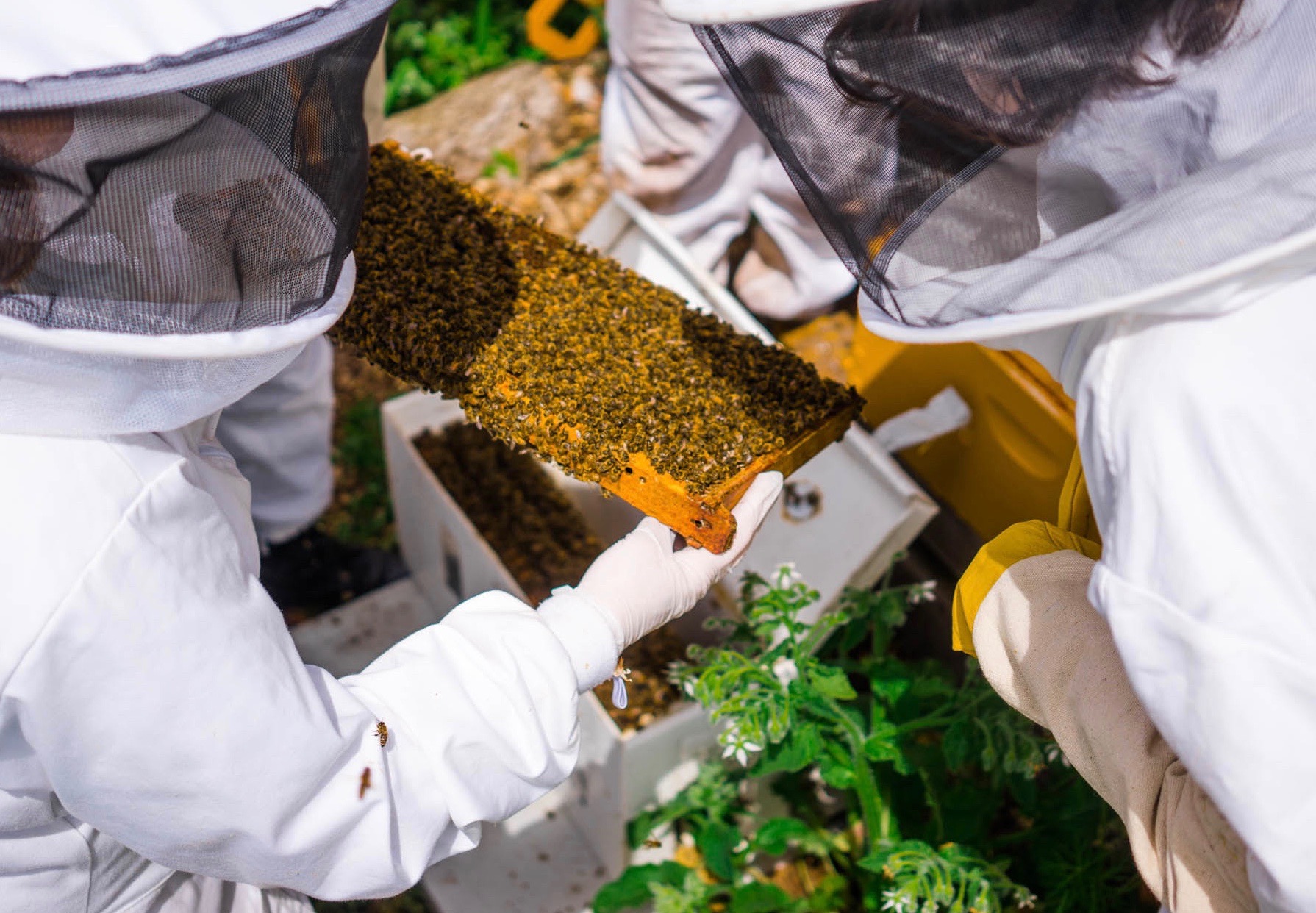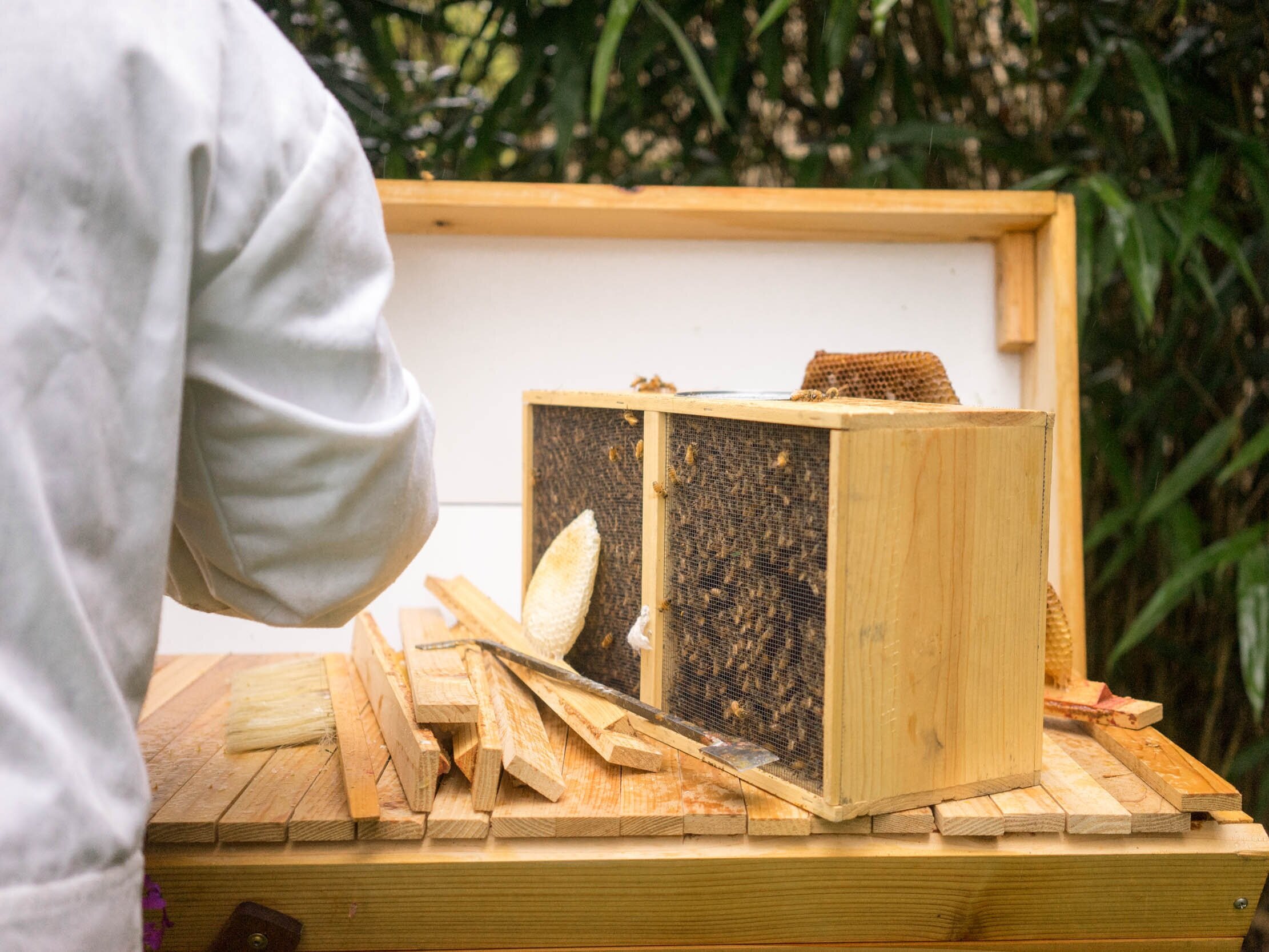We’ve had many a panicked conversation with new beekeepers who have just brought home a nuc of bees to a Top Bar hive and figured out that it’s not gonna fit. Traditional nucs are comprised of Langstroth frames, which aren’t compatible with Top Bar or Warre hives unless you do major frame surgery. It becomes a sticky, stressful situation for all involved and is a terrible way to kick off a beekeeping venture! I (Emma) am speaking from experience because this is exactly how I got started. Oops.
In the spirit of helping future beekeepers avoid this mix-up, let’s look at the differences between the two primary ways of obtaining honey bees: nucs and packages.
Packages
Packages are small boxes filled with 3 lbs of bees (~10,000 bees)! There are large apiaries (bee yards) dedicated to raising bees and shipping them all over the country. These compact crates are full of worker bees and a mated queen kept in a protected cage. Packages do not include any kind of frame or comb. Once received, the packaged bees are shaken straight into an empty hive and the caged queen is placed inside with them. The bees will chew through a candy plug in the queen cage to release her, and then they will get started on their bee business.

Pros:
In our opinion, the biggest upside of packages these days is that your colony will likely start out with a much lighter mite load than in nucs, since they are arriving without brood (baby bees in capped cells, which is were varroa mites reproduce). This is especially true if your packages are treated with oxalic acid prior to installation, which isn’t nearly as effective on nucs with capped brood cells. You can essentially start with a clean slate as far as mites are concerned, which is big plus.
They will work with any style of hive! Top Bar, Warre, Langstroth, skep… doesn’t matter. Most nucs are only compatible with Langstroth hives.
You get to observe the process of the bees starting from scratch, which is educational for a new beekeeper.
Packages are much easier to produce, so they are readily available in the spring.
Cons:
Packages are typically shaken together from several different “production” hives, and the queens are pulled from separate “queen rearing” hives. The quality of mass-produced honeybee queens have been called into question in recent years, and the fact that there are only a few large operations raising the majority of bred queens is dramatically reducing the gene pool. Finding small-scale package producers local to your area is the best way to go.
If the packages are being shipped from across the country, the bees will not be acclimated to your location (weather, forage, pests, etc.), which lowers their chances of survival.
Since they are starting without any food or brood, they need to be fed for several weeks upon installation.
Nucs
"Nuc" is the industry term for nucleus box, which is traditionally a mini Langstroth hive box with 4 - 5 frames of bees, brood, honey, pollen and a mated queen.

Pros:
Starting a new hive with nuc frames gives the bees a wing up over packaged bees and swarms because it is essentially a small but fully functioning hive already. They have drawn comb, brood, food and a laying queen. This means that the population will begin growing upon installation.
A nuc is already a working colony of bees with their proper queen in place. This allows you to verify the quality of the queen and eliminates the concern that your bees will reject her.
They work well in cold climates with a short growing season because the bees need less time to build up their population and put away adequate food stores for the winter
Nucs are not usually shipped, so you will typically be picking them up from a location closer to where you live. Bees moving from Washington to Oregon will be better off than bees moving from Florida to Oregon! .
Cons:
Nucs are coming with brood (baby bees in capped cells) that very likely have reproducing varroa mites in them. This means that your nucs will start out with a higher mite pressure than packages, which can be effectively treated to eliminate the bulk of the mites they are carrying. Mites are one of the biggest issues bees (and their keepers) are facing right now, so this is certainly something to consider.
Traditional nucs will only work with deep frame Langstroth hives, but some suppliers are starting to offer them in medium boxes as well. We are slowly starting to see more Top Bar nucs become available, as well.
Nucs are not produced in the quantities that packages are, so they are not as readily available in the spring.
Final Thoughts
Whether you decide to go with a nuc or a package, do your research on the apiaries you purchase from. Don’t make your decision based on the cheapest rates or quickest delivery - look into the quality of the queens, experiences from past customers, use of chemical treatments, etc. If you are planning to run treatment-free hives but purchase bees that have been heavily treated, don’t expect your colony to thrive. Having a plan in place to deal with varroa mites and disease is really important, especially as you’re getting started!
Okay! Consider yourself educated on the difference between packages and nucs. Every situation is different, and there is no “bad” option. Eventually, the goal is to have healthy hives that overwinter successfully, from which you can make splits (or catch swarms) and expand your apiary! You certainly don’t want to purchase bees forever, but it is a great way to get started.
